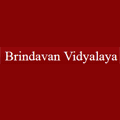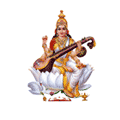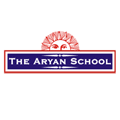Primary and Secondary Schools in India

Brindavan Vidyalaya ICSE School
Thiruvanai Kovil, India
Brindavan Vidyalaya ICSE School is an educational institution established in 2000 by Chidambaram Chettiar Charitable and the Educational Trust in Trichy, India. The school offers IGCSE subjects, aiming to provide a European-style education. It has formed numerous relationships with schools in Europe, participating in various educational projects with schools abroad. Extracurricular activities at the school are diverse, too, and include activities like Toy making, Agriculture, Pot painting, Gardening, Story Telling & Vermi Composting, as well as Dance, Music, and Keyborard.

Saraswati School
Junagadh, India
Saraswati High School is a prestigious educational institute in Junagadh, providing quality education since 1980. Our more than 3 decades of experience makes us stand apart from all other institutes. With best education, goal oriented way, great management and finally best results have made Saraswati School famous in very short span of time in not only in Junagadh but in whole Saurashtra and Gujarat.
Today our school has become a prestigious educational institute in Junagadh imparting quality education to thousands of students daily and helping them in reaching top notch position in... See full description.

The Aryan School
uttrakhand
Excellent Pastoral Care.
Holistic Learning based on Vedantic Principles.
Value- based Education.
Spacious, airy, well ventilated classroom.
A Home away from home.
Excellent Board Results
Teacher Student Ratio 1:15
Empowered Educators Having A Global Perspective.
Career Counseling
All Games: Physical Training, Skating, Swimming, Cricket, Lawn Tennis, Hockey, Soccer, Basketball, Badminton etc.
World Class Campus.
Dance (Classical & Western) Clay Modelling, Sculpture, Theatre, Fashion Designing, Cooking, Bamboo Craft, Photography, Aeromodelling.
Technology Enabled Classrooms.
In... See full description.
The Creek Planet School
Hyderabad
One of the Best CBSE schools in Hyderabad with 4 branches at Kukatpally, Miyapur, Medchal, Bachupally is affiliated to CBSE, India is The Creek Planet School.
Admissions are Open for the Academic Year 2019-2020 at all branches from Nursery to Grade X, with excellent qualified teachers, secured non-teaching staff in greenery, an unpolluted area with own buildings, secured Transport facility nearest to Madhapur, Gachibowli, Hitech City, JNTU, KPHB, Pragathi Nagar, Nizampet, Chandanagar, BHEL, Malaysian township, Kompally.
Primary and Secondary Schools in India by City:
HyderabadJunagadhTamilnaduThiruvanai KoviluttrakhandAbout Primary and Secondary Schools in India
India, the second largest country in the world by population, is considered to be one of the rising stars on the world economic stage, which some scholars say is the direct result of improvements made to its education system over the past 20 years. During that time, not only did the quality of education improve, but access to the primary and secondary levels of education also increased. Many new schools were built during the 1990s and 2000s, including hundreds in the more rural and remote regions of the country, offering education to a segment of the population that previously had little access due to distance and/or poverty. Currently over 80 percent of children in India are enrolled in school (up from approximately 70 percent at the beginning of the 1990s), and because of that, the literacy rate has improved.
Primary and Secondary Education in India
Administration
The administration of the education system in India is the joint responsibility of the central and state government, with the state given the freedom to organize its educational programs within the national framework. Educational policy planning falls under the direction of the Ministry of Human Resource Development, which includes the Department of Elementary Education and Literacy and the Department of Secondary and Higher Education. The Ministry is guided by the Central Advisory Board of Education (CABE), the national advisory board of which the ministers of each state make up the members.
Structure
Elementary or primary school education in India accounts for the first eight years of a student’s education, in grades 1-8. This is further divided into lower elementary school, grades 1-5, and upper elementary school, grades 6-8. In these grades students receive instruction in a variety of academic subjects (Language, Mathematics, Science, etc.), which becomes more advanced with each passing grade.
Secondary school education in India is broken down into two distinct stages: lower secondary school and upper secondary school. Lower secondary school consists of two grades, grade 9 and grade 10, and is currently the final stage of a student’s compulsory education. Those students who opt to attend upper secondary or high school, consisting of grades 11 and 12, have two options from which to choose: general upper secondary school and vocational upper secondary school. In the “general” program, the instruction students receive is wholly academic and much more advanced the education students receive in lower secondary school. This could also be called the college preparatory track, as the classes at this level are designed to prepare students for university admittance. The vocational track of upper secondary school offers a combination of basic general education and fairly broad vocational studies. This track is aimed at preparing India’s youth to enter the workforce and contribute to the economy.
Challenges
Despite the improvements to education and the growing government investment in the system, India still faces many educational challenges. The illiteracy rate is approximately 25 percent, far higher than the majority of countries in the developed world, and only 15 percent of students actually reach upper secondary school, which as of now is an optional level of education. Of those 15 percent only 7 percent will go on to receive a university degree.
Recognizing that these dismal statistics, particularly those regarding upper secondary school enrollments, do not bode well for the future economic security of the country, the Indian government is preparing to implement a universal policy of secondary education. The main aim is to provide high quality secondary education to all Indian adolescents up to the age of 16 by 2015, and upper secondary education to all Indian students up to the age of 18 by 2020. This is definitely a step in the right direction and very necessary if, in the years to come, the country hopes to improve or even maintain their economic standing in the world.
Primary and Secondary Education in India
Administration
The administration of the education system in India is the joint responsibility of the central and state government, with the state given the freedom to organize its educational programs within the national framework. Educational policy planning falls under the direction of the Ministry of Human Resource Development, which includes the Department of Elementary Education and Literacy and the Department of Secondary and Higher Education. The Ministry is guided by the Central Advisory Board of Education (CABE), the national advisory board of which the ministers of each state make up the members.
Structure
Elementary or primary school education in India accounts for the first eight years of a student’s education, in grades 1-8. This is further divided into lower elementary school, grades 1-5, and upper elementary school, grades 6-8. In these grades students receive instruction in a variety of academic subjects (Language, Mathematics, Science, etc.), which becomes more advanced with each passing grade.
Secondary school education in India is broken down into two distinct stages: lower secondary school and upper secondary school. Lower secondary school consists of two grades, grade 9 and grade 10, and is currently the final stage of a student’s compulsory education. Those students who opt to attend upper secondary or high school, consisting of grades 11 and 12, have two options from which to choose: general upper secondary school and vocational upper secondary school. In the “general” program, the instruction students receive is wholly academic and much more advanced the education students receive in lower secondary school. This could also be called the college preparatory track, as the classes at this level are designed to prepare students for university admittance. The vocational track of upper secondary school offers a combination of basic general education and fairly broad vocational studies. This track is aimed at preparing India’s youth to enter the workforce and contribute to the economy.
Challenges
Despite the improvements to education and the growing government investment in the system, India still faces many educational challenges. The illiteracy rate is approximately 25 percent, far higher than the majority of countries in the developed world, and only 15 percent of students actually reach upper secondary school, which as of now is an optional level of education. Of those 15 percent only 7 percent will go on to receive a university degree.
Recognizing that these dismal statistics, particularly those regarding upper secondary school enrollments, do not bode well for the future economic security of the country, the Indian government is preparing to implement a universal policy of secondary education. The main aim is to provide high quality secondary education to all Indian adolescents up to the age of 16 by 2015, and upper secondary education to all Indian students up to the age of 18 by 2020. This is definitely a step in the right direction and very necessary if, in the years to come, the country hopes to improve or even maintain their economic standing in the world.

